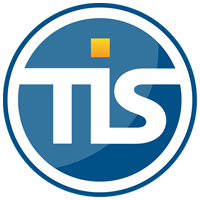TRAINING: PSD2 & Open banking: impact on the financial ecosystem and new challenges
| 23-11-2020 | Francois De Witte
On December 16th, our Expert Francois de Witte will present a Webinar in collaboration with Febelfin-Academy, regarding PSD2 & Open banking: impact on the financial ecosystem and new challenges.
This training program prepares participants for 2 major challenges of the upcoming years in banking: PSD2 & Open Banking. This will have a major impact on the financial ecosystem and will create new challenges.
The goal of this training course is to:
- Make participants aware of the ways PSD2 & Open Banking affect banks and other players in Europe;
- Understand the impact of the technical requirements with a focus on strong customer authentication;
- Outline the risks and responsibilities of the involved parties within the new regulatory framework;
- Understand the impact of Open Banking APIs (Application Programming interfaces;
- Understand the impacts of the PSD2 & Open Banking the financial ecosystem;
- Evaluate the risk and opportunities created by PSD2 & Open Banking the banks and the new players;
- Determine action plan for your company.
Target Audience
This training course can be followed by multiple target groups:
- Managers of a banks/PSP’s/Fintechs involved with the payments and digital strategy
- Product Development Experts (payments)
- Service providers involved with Open Banking
- Corporate Treasurers
- Compliance officers
Prior Knowledge
Advanced: offers practice-based applications to complement the theoretical knowledge already acquired through the “basic level” courses (in-depth learning).
There is no specific preparation required. For persons who are less acquainted with PSD2 and payments, some pre-course reading material can be made available.”
Program
This training program prepares participants for two key challenges of the upcoming years in banking: PSD2 and Open Banking.
Part I: PSD2 and Open Banking – overview:
- PSD2: Scope and Basic Principles
- XS2A (Access the Accounts)
- New Players: AISP and PISP
- SCA (Strong Customer Authentication)
- Consent and SCA
- Requirements for the Banks and TPPs
- Timetable
- Trends in Open Banking
Part II: Open banking architecture: Implications for banks and the New Players
- XS2A: Risks, Responsibilities and obligations of the related parties
- XS2A: Availability Requirements
- Setting up the SCA in Practice
- SCA: Optimization of the Exemptions
- Security requirements ensuring consumer protection
- Addressing the fraud and cyberattack risks
- Technology: building interfaces – APIs (Application Programming Interfaces)
- European initiatives to standardize the interfaces
- Practical aspects – Role of Aggregators
- Group Exercise
Part 3: PSD2: Potential impact on the market and next steps
- Global impact on the market – New Players
- Impact on the Payments Landscape
- Impact on the Cards and Digital Payment Instruments
- Impact on the Merchants and the e-commerce
- Impact on corporates
- FinTech Companies: ready to disrupt banks?
- Implication on the Digital Banking Strategy
- The new role of competition and cooperation
- Action Plan for Banks and New Players
- Group Exercise
Practical information
Duration: One day training
Date: December 16, 2020
Hours: 9AM-5PM (6 training hours)
Location: This training will be given online
Additional information: This training course will be given in English
Pricing: Members (€510), Non-Members (€610), Partner BZB (€510)










 François de Witte
François de Witte
